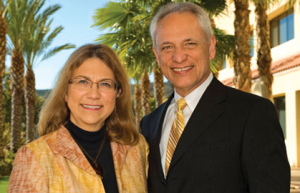Douglas Jacobsen and Rhonda Hustedt Jacobsen have been married for more than three decades, and both serve as professors at Messiah College. Douglas is distinguished professor of church history and theology (I have reviewed his most recent work: The World’s Christians). Rhonda is professor of psychology and director of faculty development. Together they have co-authored three books: Scholarship and Christian Faith: Enlarging the Conversation (2004), The American University in a Postsecular Age (2008), and No Longer Invisible: Religion in University Education (2012). Additionally, they serve as co-directors of the Religion in the Academy (RITA) project, which “focuses on the many ways that religion and spirituality (broadly construed) can enhance learning at colleges and universities.”
Book Basics
No Longer Invisible is an account of “how colleges and universities across the country are re-engaging religion and how they can do that more intelligently and effectively” based on the Jacobsen’s visits to over fifty campuses and conversations with hundreds of faculty, students, college administrators, and chaplains (vii-viii). Approachable yet academic, it offers important insight for all who are involved in the fields of religious leadership and higher education.
The first part of the book seeks to describe the enterprise of American higher education and the shifting role of religion over the last four hundred years by identifying three eras: Protestant (1636 – late 19th century), Privatized (Late 19th century – Late 20th century), and Pluriform (Late 20th century – present) . Over the last few decades American religion has undergone two significant changes: (1) increasingly pluralistic culture and (2) the widespread acceptance of a new broader definition of religion that allows people to be viewed as religious who do not belong to an identifiable religious community. This new understanding of religion when combined with changes in university life [including (1) the rejection of epistemological objectivism and embrace of multiculturalism, (2) growth of professional studies and (3) growth of student-centered learning] has created an environment in which religion has regained relevance in higher education.
The second part of the book offers chapter length essays considering six different sites of engagement in areas where religion and higher education overlap (figure below, p.56). The substantive data and helpful analysis contained within these pages deserves consideration by those involved in all aspects of higher education.
|
Historic |
Public |
Personal |
|
|
Ideas |
Religious Literacy |
Framing Knowledge |
Convictions |
|
Practices |
Interfaith Etiquette |
Civic Engagement |
Character and Vocation |
The book ends with a brief conclusion that summarizes the authors’ main arguments:
- Religion has returned to higher education in the last two decades
- Religion, as it is now understood, is not an extraneous add-on to the enterprise of learning
- Providing proper attention to religion can be a means to revitalizing higher education
So What?
Most Christian leaders are well aware of the changing nature of American religion, but less well informed about the general shifts in higher education. Most professors and administrators are well aware of the changing nature of higher education, but less well informed about the general shifts in religious practice and understanding. Both groups benefit from the understanding advanced by the Jacobsen’s. These leaders along with current and future students will benefit from the conversations and potential actions that follow.
- How would you rate your own knowledge of the changes in higher education in recent years? the changes in American religion (makeup and definition)?
- What are the implications of the return of religion in higher education for your local congregation now? Over the next few decades?
Douglas Jacobsen and Rhonda Hustedt Jacobsen. No Longer Invisible: Religion in University Education (Oxford University Press, 2012). ISBN: 9780199844739.
